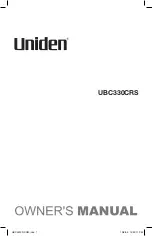
69
Beyond the Basics
The next two or three digits identify which fl eet is active, and
the last digit(s) identifi es the subfl eet.
Your task is to program your fl eet map with the same size
code assignments as the trunked system. If you do this
accurately, you’ll track all the fl eet-subfl eet combinations
used by the system. In other words, you’ll hear complete
communications while monitoring a trunked system.
If you don’t already know the size codes used, you’ll have to
guess at them. But since you don’t have to fi gure out all the
blocks at once, this isn’t as hard as it seems. Select a size
code for a block, and then press SRCH. Now listen to the
communications. If you decide you are receiving most of the
replies to the conversations with IDs assigned to the block
you just programmed, then you’ve probably selected the
right size code and can work on the next block of the map.
Finally, for most public safety systems there are some size
codes which are more common. Size code 3 and size code 4
are probably the most common, followed by size codes 10,
11, and 12.
Fleet Map Size Codes
Size
Fleets
Subfl eets
IDs
Blocks Used
0
Reserves block for Type II IDs
1
128
4
16
1
2
16
8
64
1
3
8
8
128
1
4
1
16
512
1
5
64
4
32
1
6
32
8
32
1
7
32
4
64
1
8
16
4
128
1
9
8
4
256
1
10
4
8
256
1
11
2
16
256
1
12
1
16
1024
2
















































